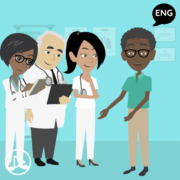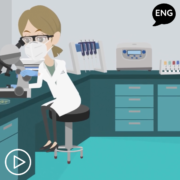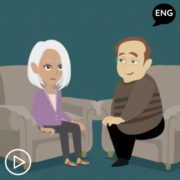A 12-Month Plan To Increase Visibility and Amplify Your Advocacy in 2023
Are you looking to enhance your online presence and make your cause more visible in the coming year?
By following the monthly suggestions in this article, you can strengthen your online presence, increase your cause’s visibility, and achieve your goals.
Get ready to take action and make a difference in 2023!
January
Set SMART Social Media Goals
Let’s start the new year off by setting some SMART social media goals.
Identify what you would most like to accomplish with social media this year, and then set specific and actionable goals to achieve them. To become a reality, a goal should be specific, measurable, attainable, realistic, and time-bound. We call these SMART goals. By setting SMART social media goals, you’ll be able to focus your efforts and measure your progress in a clear and meaningful way.
Here’s how to make a goal SMART:
Specific —the more specific your goal is, the easier it will be to see what you’re trying to accomplish. As an example, let’s say you set a goal to increase your Instagram followers by 10%.
Measurable — how will you measure success? Using the Instagram example of growing your Twitter followers by 10%, you can measure your progress by checking your follower numbers.
Attainable — do you think your goal is attainable? Consider whether your goal of achieving 10% Instagram growth is realistic (or whatever goal you have set for yourself).
Relevant — social media goals need to be relevant. Is Instagram the most effective platform to achieve this goal? Is another platform more likely to help you grow followers?
Time Specific — lastly set yourself a deadline for your goal, such as achieving 10% more followers by the end of the month.
February
Perfect Your Social Profiles
This month, take some time to review each of your existing social media profiles and ask yourself the following questions:
- Are the quality of my profile picture and cover pictures consistent across all platforms?
- Do I have a complete bio and about section? Do they accurately describe me?
- Is my bio keyword-rich so that others can easily find me?
- Is my social media handle consistent across all platforms?
- Are my contact information and website links prominently displayed?
- Do I have any outdated information pinned at the top of your timeline?
- Is there any information that needs to be added or changed?
March
Conduct a Social Media Audit
An audit is a great way to figure out where you’re at with social media and what you can improve.
To start, you can create a spreadsheet with columns for each social media platform, such as Facebook, Instagram, Twitter, etc. In each row, you can include the account name, username, and any other relevant information.
Next, track your posting activity for each account by noting the date and number of posts for each day or week.
Finally, analyze the results by looking at metrics such as the number of likes, comments, and shares for each post, as well as the overall engagement and reach of each account. This will give you a sense of which platforms are performing well and which may need improvement. Based on the analysis, you can adjust your strategy for each platform to optimize your results.
Want to dive deeper? Download my step-by-step guide to conducting a social media audit at http://bit.ly/3pvjVa5
April
Conduct a Content Audit
The purpose of a content audit is to evaluate and analyze all your existing content to determine what’s working and what’s not.
By conducting a content audit, you can identify gaps in your content strategy and make more informed decisions about future content.
Here are the steps to conduct a content audit:
- Collect all of your existing content, including blogs, social media posts, videos, images, etc.
- Sort and categorize your content by topic, format, and date.
- Assess the performance of your content using metrics like engagement, shares, and views. Consistency, relevance, and quality should also be considered.
- Find gaps in your content strategy and identify patterns in your analysis of content. Videos, for example, may be particularly popular with your audience, so you may want to produce more videos.
- Gather all the information you’ve gathered during the audit into a spreadsheet or document.
- Use the information you’ve gathered to create an action plan for your content. Consider creating more of a certain type of content, improving the quality of your content, or focusing on a certain topic.
May
Create a Content Calendar
Using April’s content audit as a springboard, create a content calendar that outlines the themes and topics you’ll be focusing on in the upcoming months.
A content calendar will help you stay on track with your social media goals and ensure that your content is consistent and relevant. Use a mix of text, images, and videos that are tailored to the platforms you are using. Review your calendar regularly and make adjustments to your posting schedule as news and events arise, to ensure the content remains current.
June
Repurpose Your Content
Review your content audit and determine if any content can be repurposed
By repurposing content, you can increase engagement, reach new audiences, and gain more mileage from your content. In addition, you will be able to refresh old content and make it more relevant.
Here are a few ways to repurpose content:
- Make social media posts using bite-sized chunks of information from long-form articles.
- Highlight quotes in your blog post and turn them into a quote graphic using a tool like Canva, Quotes Cover, or Adobe Spark.
- Video is the most engaging form of content. Break down a popular blog post into video tips.
- An audio podcast episode can be turned into a video by adding images, text, and animation.
- If you have a video that performed well, you can create a blog post or podcast episode that summarizes the main points.
July
Create Visual Impact
Let’s get creative with our visual assets this month.
With the help of your visual assets, you can create shareable and engaging content that will help you build your online presence and raise awareness for your cause. Additionally, this is a great opportunity to connect emotionally with your audience and stand out from the crowd.
These are a few ideas to get you started:
- Using a tool like Canva or Adobe Spark, create custom images that can be used to create social media posts, blog headers, and more.
- Use an infographic maker to create infographics that explain complex information in an easy-to-understand way.
- Create shareable images by using quotes from thought leaders in your field.
- Add a touch of humor or personality to your social media posts with GIFs created with tools like Giphy.
For more tips read:
Patient Advocacy: 6 Tips for Making A Visual Impact on Social Media
August
Host a Live Virtual Event
Hosting a virtual event or webinar can build community and engage supporters.
Connecting with your audience in real-time can help you create an interactive and engaging experience. Participation and engagement can also be encouraged with interactive features like polls, Q&A sessions, and breakout rooms.
Tips for hosting a successful virtual event:
- Decide what you want your event to accomplish and plan your content accordingly.
- Select a platform that allows you to host your event and engage with your audience in real-time.
- Encourage people to register for your event by using social media channels, email, and other marketing channels.
- Take advantage of interactive features during the event, such as polls, Q&A sessions, and breakout rooms, to engage your audience.
- After the event, follow up with attendees to thank them and to provide them with additional information or resources.
- If possible, record and share your event. People who couldn’t attend can watch it later.
September
Build Your Authority on LinkedIn
LinkedIn is flourishing right now and has released some new features to make it an even more engaging place for users.
Discover how top patient advocates are using LinkedIn to build their thought leadership. You’ll find them consistently publishing thought-provoking commentary and original think pieces and engaging with industry leaders. As with all social media, LinkedIn allows you to compete on an equal footing. Use your LinkedIn profile to build online visibility this month to take full advantage of these opportunities.
You can learn more here:
Patient Advocacy: How To Optimize Your LinkedIn Profile
Patient Advocacy: How To Boost Your Visibility on LinkedIn
October
Increase Twitter Engagement
Twitter might not be as popular as Facebook, Instagram, or YouTube, but it still has a large following among healthcare professionals and patient advocates.
Using Twitter effectively can help you stay informed, encourage collaboration, and amplify advocacy.
Follow these steps to get the most out of Twitter:
- Follow relevant accounts and hashtags to stay on top of research, news, and developments.
- Build relationships by joining Twitter chats and retweeting content.
- Promote your cause by sharing upcoming events and petitions.
- Share information and resources that can help educate people about your cause.
- Make your content discoverable with hashtags.
- Live-tweet events, conferences, or other activities related to your cause. This will allow you to provide real-time updates and engage with a wider audience.
More tips can be found here:
Patient Advocacy: How To Increase Twitter Engagement
November
Try Some New Tools
By taking advantage of the right tools, you can improve your social media activities and maximize your online time.
I have put together a list of my favorite social media apps that I use on a daily basis. The tools in this list will let you edit images, create graphics, and schedule social media posts. Every tool listed is free, so you can try it out before deciding if you want to upgrade.
Check out the list at:
Patient Advocacy: 21 Tools To Help You Achieve More With Social Media
December
Evaluate Your Progress
As the end of the social media year approaches, it’s time to evaluate and measure your progress.
Here are a few steps to help you evaluate your social media efforts over the past 12 months:
- Review the goals you set at the start of the year to see how many of them you achieved.
- Track your progress with tools such as Google Analytics and native social media analytics. Some key metrics to track are followers, social media channels driving the most traffic to your site, comments, and shares. Analytics and measurement tools are usually available on social media platforms so you can monitor their performance.
- Determine what types of content performed well over the last year and what didn’t. By doing this, you’ll be able to figure out what resonates best with your audience. Pay attention to what’s working for you – do more of it – and drop things that aren’t generating much engagement.
- Make a plan for the future based on the insights you gained from your evaluation. Set new goals for the year and identify areas for improvement.
By following these tips and strategies, you can build a strong online presence, increase visibility for your cause, and reach your goals over the coming months.
Here’s to your social media success!
A Stanford Medicine X e-Patient scholar, Marie Ennis O’Connor is an internationally recognized keynote speaker, writer, and consultant on global trends in patient engagement, digital health and participatory medicine. Marie’s work is informed by her passion for embedding the patient voice at the heart of healthcare values. She writes about the experience of transitioning from breast cancer patient to advocate on her award-winning blog Journeying Beyond Breast Cancer.
































